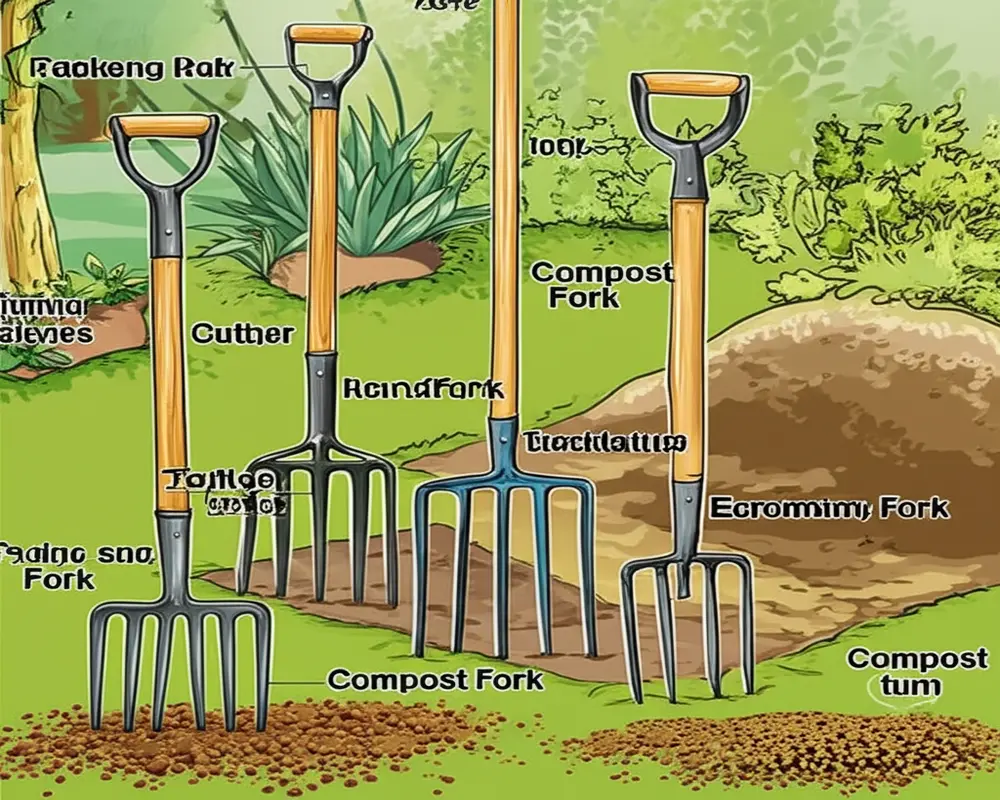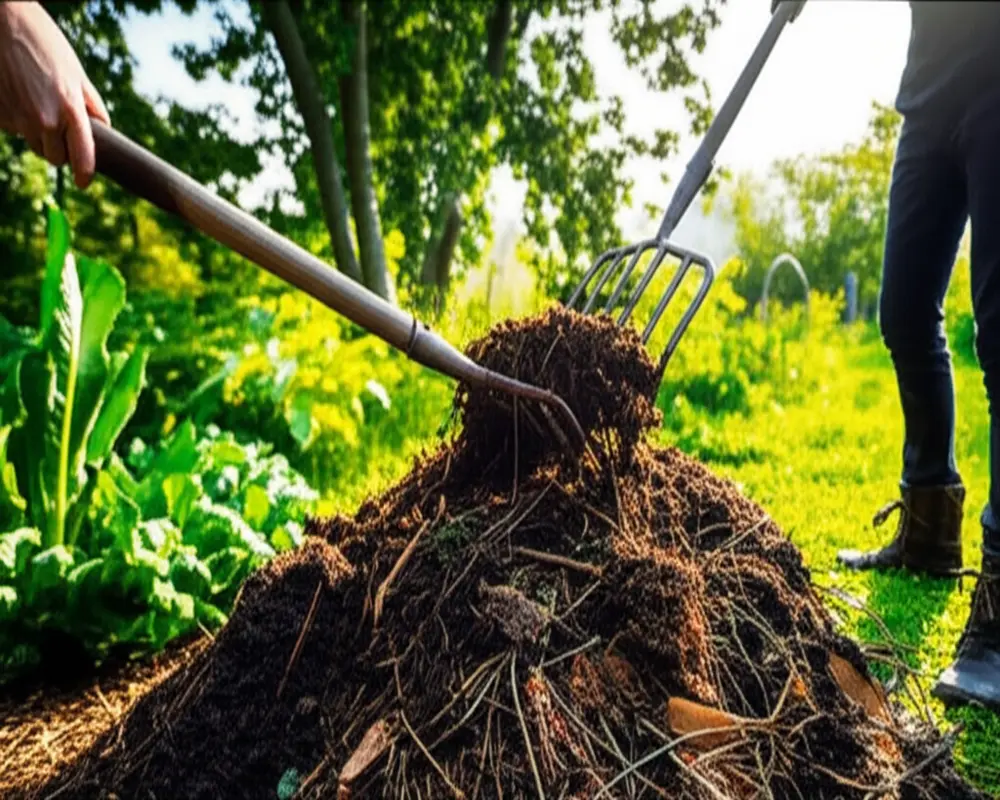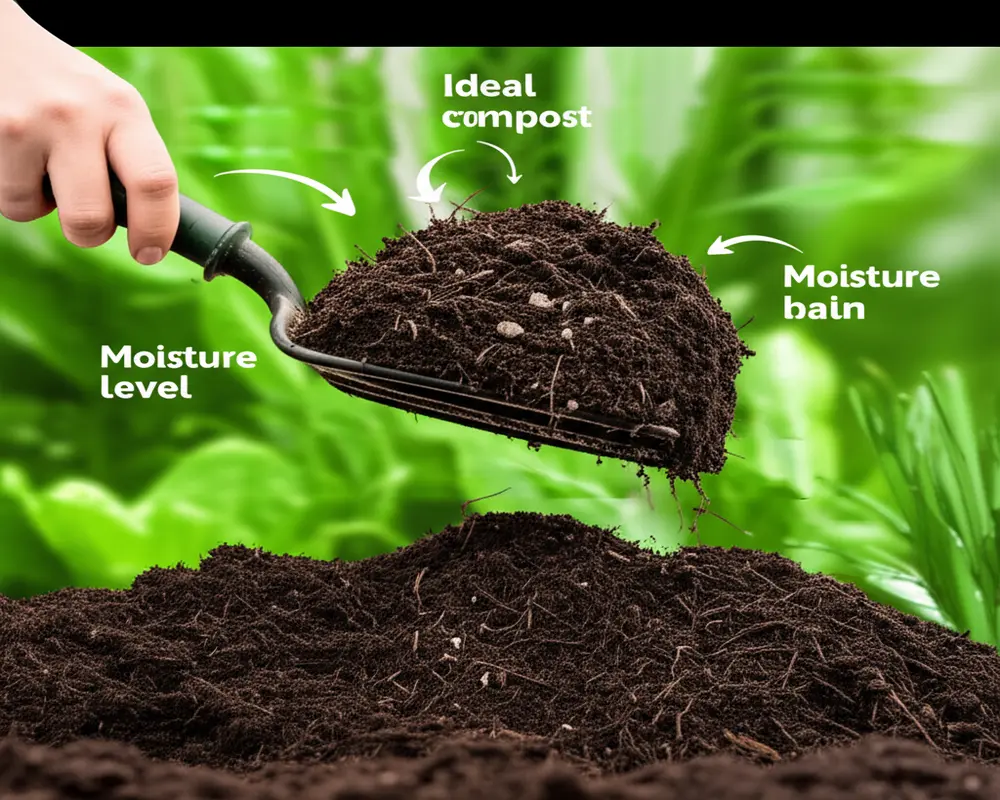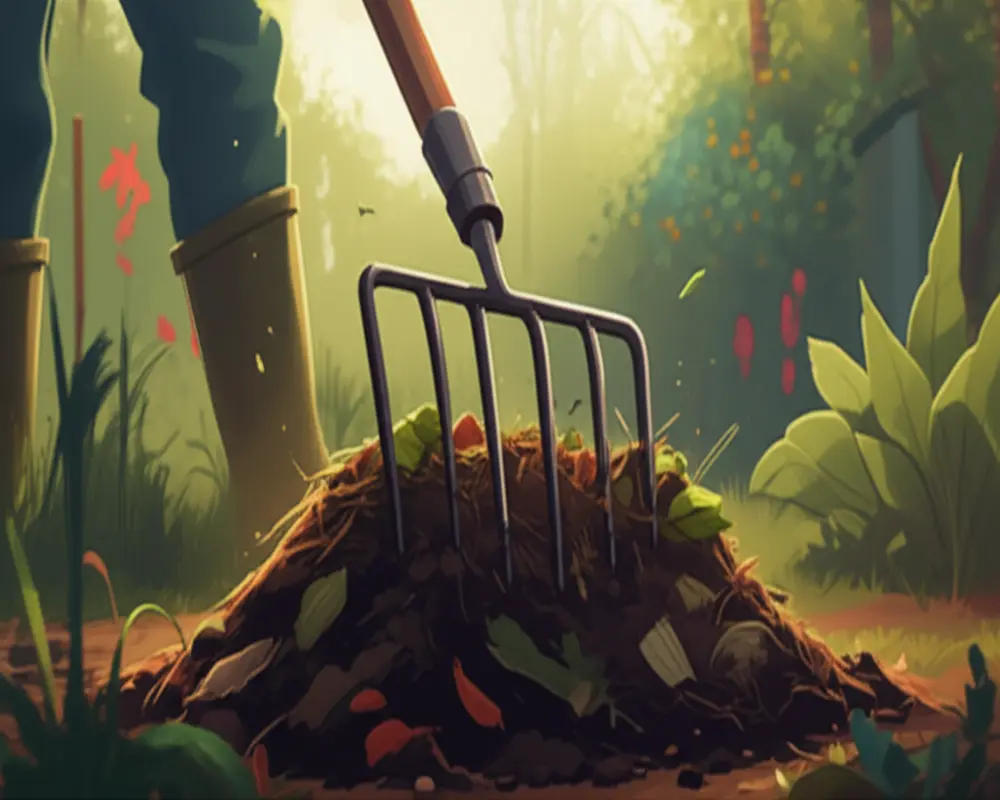Composting with garden fork is more than just gardening labor; it is an essential process for nurturing healthy soil and robust plant growth. This comprehensive guide delves into the practical aspects of garden fork composting techniques, focusing on aeration, turning, troubleshooting common issues, and maintaining your tool for peak performance. By harnessing these expert methods, you’ll transform your compost pile into nutrient-rich, usable compost efficiently and sustainably.
I. Introduction: The Power of the Pitchfork in Composting
Few tools in organic gardening carry the multifaceted utility of a garden fork. Beyond simple digging, this instrument serves as a vital companion in the composting process, especially for aeration and turning compost piles effectively. Garden forks facilitate oxygen penetration, critical for the microbes breaking down organic matter. In this guide, you’ll find detailed advice on how to optimize compost pile aeration using a garden fork, troubleshoot common problems, and maintain your tool for durability in 2025 and beyond.
Oxygen acts as the lifeblood of aerobic decomposition, feeding microbes that convert waste into valuable humus. The garden fork mechanically introduces fresh air, preventing anaerobic zones that cause foul odors and slow the composting process.
II. Understanding Your Tool: The Garden Fork for Composting
The range of forks available has distinct applications in composting. The classic Garden Fork or digging fork features sturdy tines well-suited for compact soils but may require more effort with bulky compost.
The Pitchfork or Compost Fork typically has longer, lighter tines designed for fluffing loose, bulky organic material without compressing it—ideal for turning garden waste. For extremely large compost piles, a broadfork offers wide coverage and ergonomic advantage but is less common for typical home gardens.

In choosing a fork, consider material and ergonomics: steel tines paired with fiberglass handles offer resilience without excessive weight, while tine shapes (flat vs. round) affect penetration and lifting capability. Handle length influences leverage and body mechanics, which are vital for sustainable use and injury prevention. Maintain a secure grip and practice proper lifting techniques to avoid strain—safety is paramount in any garden task.
III. The “Why”: Benefits of Turning and Aerating Your Compost with a Fork
Turning compost with a garden fork accelerates decomposition by introducing oxygen that fuels aerobic microorganisms. This process controls pile temperature, evenly distributing the generated heat necessary to break down materials effectively. Regular aeration prevents anaerobic pockets that produce unpleasant odors and slow breakdown.
Besides temperature and smell management, turning ensures even decomposition, mixing different organic inputs uniformly. It also redistributes moisture within the pile — a crucial factor for microbial activity — and disrupts habitats that might attract pests like rodents or flies.
IV. The “When”: Optimal Timing for Forking Your Compost Pile
The frequency of turning depends on your compost pile’s size, composition, and environmental conditions. Generally, turning every 5 to 7 days keeps the process active. Signs indicating the need for aeration include a noticeable drop in pile temperature, flicks of ammonia or foul odors, compacted or matted layers, and spots where the material feels too dry or wet.
Weather affects microbial activity, so wetter or colder seasons may require less frequent turning, whereas hot, dry periods might demand closer monitoring. Adjust your fork use accordingly to maintain optimal conditions.
V. The How-To: Step-by-Step Techniques for Composting with a Garden Fork
Begin by assessing moisture levels — your compost shouldn’t feel too soggy or dry. Prepare your garden fork and optional tools such as gloves and watering cans.

Two primary turning approaches exist:
- The Transfer Method: This involves moving compost from one bin or pile to another, which inherently mixes and aerates. Use the garden fork to lift material from the bottom and sides; break up clumps, incorporate fresh greens and browns, and consciously introduce air pockets.
- The Internal Aeration Method: Turn the compost in place using the fork to plunge deeply into the pile, lift and shake material to loosen compacted layers, and scrape the sides and bottom to prevent anaerobic zones.
Techniques such as lifting and shaking with the tines aid in breaking down harder clumps. Incorporate new organic materials in layered fashion to maintain carbon-nitrogen balance, and adjust moisture by adding water or dry materials as needed.
VI. Best Practices for Maximizing Your Fork’s Effectiveness
Work from the outside inward, moving cooler materials toward the core, stimulating microbial activity there. Avoid over-turning, as excessive disturbance cools the pile and reduces efficiency.

Maintain moisture akin to a wrung-out sponge; too wet invites anaerobic conditions and too dry stalls microbes. Breaking down matted layers increases airflow and hastens decay. Aim for a balanced layering of carbon-rich “browns” and nitrogen-rich “greens.”
VII. Troubleshooting Common Composting Problems with Your Garden Fork
When encountering foul odors, vigorous turning combined with adding dry carbon materials like shredded leaves corrects anaerobic conditions. If your pile fails to heat, thorough turning with added nitrogen (e.g., kitchen scraps) and moisture activates microbial life.
Soggy or matted areas benefit from loosening the material and mixing in dry brown matter. Dry compost requires moistening while turning to reactivate decomposition. Ensure even decomposition by consistently mixing and redistributing materials. Pest problems often diminish by turning deeply to bury food scraps and prevent access.
VIII. Maintaining Your Garden Fork for Longevity in Composting
After each compost turn, clean your garden fork by removing soil and debris to prevent rust and contamination. Sharpen tines periodically for efficient penetration. Applying light oiling to metal parts guards against rust, and storing your fork in a dry place preserves handle integrity and overall function.
IX. Conclusion: Your Composting Journey with a Trusted Tool
Your garden fork is pivotal for transforming organic waste into nutrient-dense compost. With careful aeration and turning, you can maintain an active, odor-free pile that benefits your garden ecosystem. Embrace these techniques confidently and share your composting successes to inspire others.
For further tips on gardening tools and maintaining efficient garden operations, visit our detailed guides on best garden spades and ergonomic garden spades.
Authoritative references:
- United States Environmental Protection Agency (EPA) – Composting at Home
- Cornell Waste Management Institute – Composting
- Garden Organic – Composting Your Garden
Frequently Asked Questions (FAQs)
- What type of garden fork is best for composting?
- Pitchfork-style compost forks with lighter, longer tines are preferred for aerating and turning loose garden waste, while heavier digging forks suit compact soils. Material quality and handle ergonomics should also influence your choice.
- How often should I turn my compost pile?
- Turning your pile every 5 to 7 days is optimal for active composting, but adjustments depend on the pile size, weather, and material moisture levels.
- Why is moisture control important in composting?
- Proper moisture facilitates microbial activity essential for decomposition. A moisture level similar to a wrung-out sponge balances oxygen availability and microbial health.
- Can too much turning harm my compost pile?
- Excessive turning cools the pile by dispersing heat generated by microbes, potentially slowing decomposition. Aim for a balance to maintain heat without disrupting microbial colonies.
- How do I maintain my garden fork?
- Clean your fork after use, sharpen tines as needed, apply oil to metal parts to prevent rust, and store it dry and sheltered from weather elements.

